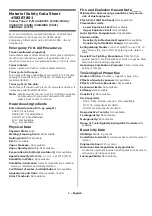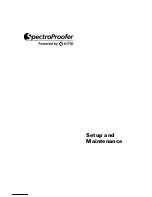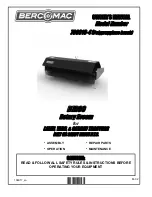
15
without using this technique, it is the best and fastest way to determine when you have
sharpened sufficiently in the preliminary steps. This will help you avoid oversharpening
and ensure incredibly sharp edges every time. Cutting a tomato or a piece of paper is
a convenient method of checking for finished blade sharpness.
7. Use only light downward pressure when sharpening – just enough to establish secure
contact with the abrasive disk.
8. If your knife has a significant choil you may find it helpful to place your index finger
within or just behind the choil (see Figures 14 and 15) as you insert the blade in the
sharpener. Your finger can act as a “stop” and prevent you from inserting the blade so
far that the choil area will catch on the front stop-bar of the sharpener as you with-
draw the blade. A little practice will help you perfect this technique. As you insert the
blade let your finger slide down the front of the sharpener.
9. Used correctly, you will find you can sharpen the entire blade to within 1/8” of the
bolster or the sharpener handle. This is a major advantage of the Chef’sChoice
®
Model
15 compared to other sharpening methods—especially important when sharpening
chef’s knives where you need to sharpen the entire blade length in order to maintain
the curvature of the edge line. If your chef’s knives have a heavy, thick bolster near
the handle extending to the edge, a commercial grinder can modify or remove the
lower portion of the bolster so it will not interfere with the sharpening action, allowing
you to sharpen the entire blade length.
10.The stropping/polishing disks in the Stage 3 are designed to last for years of use,
however you can maximize their useful life by periodically modifying your sharpening pat-
tern in Stage 2. The burr developed in Stage 2 will mildly wear the stropping/
polishing disk it first contacts in Stage 3. Vary your last pull in Stage 2 by sometimes
making the last pull on the left disk and at other times finish on the right disk of Stage 2.
11.Do not attempt to use this sharpener to sharpen either ceramic knives or scissors.

































